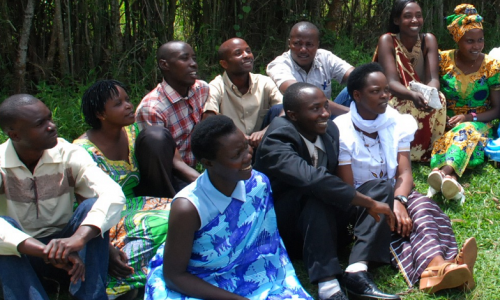Expanding Choice through the Introduction and Scale-Up of the Standard Days Method® in India
[Originally guest posted on EngenderHealth-led RESPOND Project’s Champions4Choice Blog here.]
For decades, India’s national family planning (FP) program has emphasized female sterilization, resulting in limited contraceptive method options for those with an unmet need for FP, especially for spacing pregnancies. However, following the 1994 International Conference on Population and Development (ICPD), which recommended high-quality services and a range of methods, the Government of India adopted a national population policy in 2000 that shifted its FP program’s focus from achieving target-driven demographic goals to ensuring reproductive health and rights, including voluntary and informed choice.
While the reasons women cite for nonuse of FP in India are nuanced, data from the 2005–2006 National Family Health Survey (NFHS) show that discontinuation rates are highest for injectables and the pill, primarily due to concerns over side effects. Women who do not intend to use FP state their top reasons as fertility-related (e.g., infrequent sex, menopause, or perception of infecundity), opposition, or concern over side effects. By expanding the array of available FP methods—in addition to improving counseling for all methods—it is more likely that women will begin using and continue to use the option that best suits their needs and desires.
Since 2004, the Institute for Reproductive Health (IRH) at Georgetown University has supported the Government of Jharkhand (GOJ), one of India’s newest states, in this effort by working together to introduce and scale up the Standard Days Method® (SDM). SDM is a low-cost method with no side effects that can fulfill an unmet need for some women. It can serve as a gateway to talk about other available methods while increasing choice, particularly where there is cultural opposition to FP. Introducing SDM has also been shown to help women understand their fertility, engage men in FP, improve couple communication, and improve condom counseling and use.
To date, nearly 2,000 service delivery points in Jharkhand have incorporated SDM into their basket of available methods, and more than 11,000 providers have been trained to offer the method. Efforts at Jharkhand State to include SDM in policies, guidelines, protocols, and the logistics system were successful. According to baseline and endline surveys conducted by IRH, contraceptive prevalence in the region rose from 48% to 59%, with 6% of women using SDM at endline, suggesting inclusion of SDM in the method mix can improve FP use overall.
Among the women in Jharkhand who selected SDM as their FP method, users were highly satisfied with the method and liked that it had no side effects or health risks. SDM was well-positioned to overcome certain barriers to FP use, such as religious and partner constraints. Eighty-five percent of users noted that it was compatible with their religion, and 80% stated that it was acceptable to men. Users also felt the method was easy for them and their partners to understand.
Learn more about the impact of introducing a new method into Jharkhand’s FP program in this video and country brief.
Continue the conversation with us on Facebook or Twitter: @IRH_GU
___
The Champions4Choice Guest Blog Series seeks to highlight the rights and contraceptive choice-related work of international development, public health, and human rights organizations, generate constructive debate, and foster our growing of champions. We invite you to share your views on the topic and ask the author questions. Submit your own guest blog post here!
 Where We Work
Where We Work  Press Room
Press Room  FACT Project
FACT Project  Passages Project
Passages Project  Learning Collaborative
Learning Collaborative  Search All Resources
Search All Resources  Social Norms
Social Norms  Fertility Awareness Methods
Fertility Awareness Methods